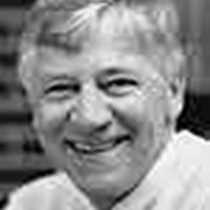Astoria, Oregon
The Sea Lion docked at Astoria, the oldest American settlement on the West Coast, early this morning. Unlike Lewis and Clark, who spent the winter of 1805-06 in this area and only experienced 11 days without rain, we were greeted by still another beautiful, sunny day.
After a couple of hours at the Columbia Maritime Museum, a fine facility located a couple of hundred yards from our mooring, we boarded buses to Ft. Clatsop, an accurate reconstruction of the winter quarters of the Corps of Discovery from December 7, 1805 until March 23, 1806. The full scale replica of the original fort, an excellent museum, and a bookstore filled with virtually all currently available publications relating to Lewis and Clark, added to our week-long immersion retracing the greatest of all American exploration efforts.
The 50’x 50’ fort gave Lewis and Clark, and their party, some relief from the constantly inclement weather, but the Journals give evidence of their spirits being tried by the dreariness and tedium. The men attempted to occupy themselves with hunting (they ate over 100 elk during this winter encampment,) making moccasins for the return trip from the elk skins (338 pairs,) and with routine soldiering. Lewis did some of his most significant natural history work once he renewed his Journal writing on January 1st, and Clark put the finishing touches on what would prove to be, upon publication in 1814, the definitive map of the American West. Yet Lewis likely caught the sentiment of all when he wrote on New Years’ day that he longed for the next January 1st, in 1807, when he “would be back in the bosom of his friends.”
On this fine day almost 200 years hence, the last full day of our six day expedition, we now begin to think of having to leave the good company of so many new friends made, and good learning, and fun, enjoyed. But we continue, even in the waning hours of our time together, to have an interesting mixture of Lewis and Clark studies, and other activities. A quick after lunch trip to the Astoria Column, and a hike up its 167 steps, brought a beautiful 360 degree view of the mouth of the Columbia, and the surrounding area. And a later afternoon voyage gave us a close view of the “graveyard of the Pacific,” the Columbian bar. This water, sand and rock hazard frustrated innumerable vessels until American Captain Robert Gray solved the nautical mystery in 1792 and became the first non-Native American to enter the river.
We will soon depart the entrance to the Columbia and venture back upstream to Portland, where we disembark shortly after breakfast tomorrow a.m. It has been a fine experience!
The Sea Lion docked at Astoria, the oldest American settlement on the West Coast, early this morning. Unlike Lewis and Clark, who spent the winter of 1805-06 in this area and only experienced 11 days without rain, we were greeted by still another beautiful, sunny day.
After a couple of hours at the Columbia Maritime Museum, a fine facility located a couple of hundred yards from our mooring, we boarded buses to Ft. Clatsop, an accurate reconstruction of the winter quarters of the Corps of Discovery from December 7, 1805 until March 23, 1806. The full scale replica of the original fort, an excellent museum, and a bookstore filled with virtually all currently available publications relating to Lewis and Clark, added to our week-long immersion retracing the greatest of all American exploration efforts.
The 50’x 50’ fort gave Lewis and Clark, and their party, some relief from the constantly inclement weather, but the Journals give evidence of their spirits being tried by the dreariness and tedium. The men attempted to occupy themselves with hunting (they ate over 100 elk during this winter encampment,) making moccasins for the return trip from the elk skins (338 pairs,) and with routine soldiering. Lewis did some of his most significant natural history work once he renewed his Journal writing on January 1st, and Clark put the finishing touches on what would prove to be, upon publication in 1814, the definitive map of the American West. Yet Lewis likely caught the sentiment of all when he wrote on New Years’ day that he longed for the next January 1st, in 1807, when he “would be back in the bosom of his friends.”
On this fine day almost 200 years hence, the last full day of our six day expedition, we now begin to think of having to leave the good company of so many new friends made, and good learning, and fun, enjoyed. But we continue, even in the waning hours of our time together, to have an interesting mixture of Lewis and Clark studies, and other activities. A quick after lunch trip to the Astoria Column, and a hike up its 167 steps, brought a beautiful 360 degree view of the mouth of the Columbia, and the surrounding area. And a later afternoon voyage gave us a close view of the “graveyard of the Pacific,” the Columbian bar. This water, sand and rock hazard frustrated innumerable vessels until American Captain Robert Gray solved the nautical mystery in 1792 and became the first non-Native American to enter the river.
We will soon depart the entrance to the Columbia and venture back upstream to Portland, where we disembark shortly after breakfast tomorrow a.m. It has been a fine experience!




